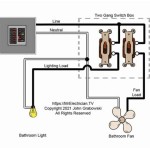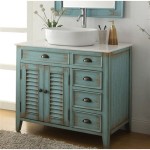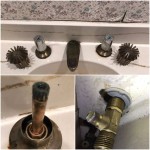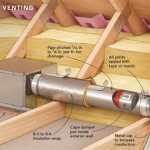Understanding Bathroom Sink Pipes: A Diagram and Explanation
The plumbing beneath a bathroom sink, often hidden from view, is a critical system for delivering water to the faucet and removing wastewater. A clear understanding of the individual components of this system, often aided by a bathroom sink pipes diagram, is essential for both homeowners and plumbing professionals. This article provides a detailed explanation of the typical layout and function of each part of a bathroom sink's plumbing, equipping the reader with the knowledge to diagnose and potentially resolve common plumbing issues.
The system primarily consists of supply lines for both hot and cold water, shut-off valves, the faucet itself, a drain assembly culminating in a P-trap, and finally a drainpipe leading to the main plumbing system of the building. Each element plays a crucial role in ensuring the efficient and sanitary operation of the sink. A diagram is often the best way to visualize how these components connect and interact.
Key Components of a Bathroom Sink Plumbing System
A bathroom sink pipe system is comprised of several key components, each with a specific function. Understanding these components allows for a more informed approach to maintenance and repair.
Supply Lines: These flexible tubes deliver potable water to the faucet. Typically, there are two supply lines: one for hot water and one for cold water. They connect to the shut-off valves and then run up to the faucet. Materials commonly used for supply lines include braided stainless steel, copper, and PEX (cross-linked polyethylene). Braided stainless steel is favored for its durability and resistance to bursting. Copper, while reliable, can be more challenging to install. PEX offers flexibility and ease of installation, making it a popular choice for DIY projects.
Shut-Off Valves: Positioned on the water supply lines just before they connect to the faucet, shut-off valves allow the water supply to the sink to be isolated without having to turn off the main water supply to the entire building. This is an invaluable feature when performing repairs or replacements on the faucet or other sink components. These valves typically employ a simple quarter-turn mechanism or a multi-turn compression mechanism. Quarter-turn valves offer quick and easy on/off control, while multi-turn valves allow for more gradual adjustment of water flow and are potentially more durable.
Faucet: The faucet controls the flow and temperature of the water delivered to the sink basin. Faucets come in a variety of styles and configurations, including single-handle, double-handle, and touchless models. Internally, faucets utilize cartridges or compression valves to regulate water flow and mixing. The faucet connects to the supply lines, usually with threaded connections, and requires a watertight seal to prevent leaks. The drain assembly, controlled by a lift rod or push-button mechanism, is often integrated with the faucet.
Drain Assembly: The drain assembly is the mechanism that allows water to drain from the sink basin. It typically consists of a flange, a drain body, a stopper, and a tailpiece. The flange sits inside the sink basin, fitted with a rubber gasket to create a watertight seal. The stopper, operated by the lift rod or push-button, prevents water from flowing down the drain. The tailpiece is a short length of pipe that connects the drain body to the P-trap.
P-Trap: This curved section of pipe is a critical component in preventing sewer gases from entering the bathroom. The P-trap holds a small amount of water that acts as a barrier, effectively sealing the drainpipe and stopping noxious odors from rising into the living space. The P-trap must be properly installed and maintained to ensure its effectiveness. Periodic cleaning may be necessary to remove debris and prevent clogs.
Drainpipe: The drainpipe connects the P-trap to the building's main drain line, carrying wastewater away from the sink. Drainpipes are typically made of PVC, ABS, or copper. The diameter of the drainpipe is important for ensuring proper drainage and preventing backups. Building codes often specify minimum drainpipe sizes for different types of fixtures.
Understanding the P-Trap
The P-trap is a deceptively simple component that plays a vital role in bathroom plumbing. Its primary function is to prevent sewer gases from entering the building, safeguarding the health and comfort of the occupants. Without a properly functioning P-trap, unpleasant odors and potentially harmful gases could permeate the bathroom.
The P-trap works by trapping a small amount of water in its curved section. This water acts as a seal, preventing gases from flowing backward up the drainpipe. The water level in the P-trap is maintained by the regular use of the sink. When water drains from the sink, it flows through the P-trap and into the drainpipe, replenishing the water level. If the sink is not used for an extended period, the water in the P-trap may evaporate, allowing sewer gases to escape. This is why it's recommended to periodically run water down drains that are not frequently used.
Common issues associated with the P-trap include clogs and leaks. Clogs can occur when hair, soap scum, or other debris accumulate in the trap. Leaks can result from loose connections, cracked pipes, or corroded fittings. Regular cleaning and inspection of the P-trap can help prevent these problems. Cleaning can be accomplished by carefully disassembling the P-trap, removing any debris, and reassembling it securely. When disassembling the P-trap, it's essential to have a bucket on hand to catch any water that may be trapped inside.
The proper installation of the P-trap is crucial for its effectiveness. The trap must be installed level and securely to prevent leaks. The depth of the water seal in the P-trap is also important. Building codes typically specify minimum and maximum trap depths to ensure adequate protection against sewer gases. If the trap depth is too shallow, the water seal may evaporate too quickly. If the trap depth is too deep, it may be more prone to clogging.
Troubleshooting Common Bathroom Sink Plumbing Problems
Many bathroom sink plumbing problems can be diagnosed and potentially resolved with a basic understanding of the system and a few simple tools. Regular maintenance and prompt attention to minor issues can prevent more serious problems from developing.
Leaks: Leaks are a common plumbing problem that can occur at various points in the bathroom sink plumbing system. Common leak locations include the supply line connections, the faucet base, the drain assembly, and the P-trap. Identifying the source of the leak is the first step in resolving the issue. Check all connections for tightness and look for signs of corrosion or damage. Tightening loose connections may be sufficient to stop the leak. If the leak persists, replacing worn washers, O-rings, or even the entire component may be necessary.
Clogs: Clogs are another frequent problem that can cause slow drainage or complete blockage of the sink. Common causes of clogs include hair, soap scum, grease, and small objects that have fallen into the drain. A plunger is often the first tool to try when dealing with a clog. By creating suction, the plunger can dislodge the blockage and allow water to flow freely. If the plunger is ineffective, a plumbing snake can be used to break up or retrieve the clog. The plumbing snake is a flexible tool that can be inserted into the drainpipe to reach and remove obstructions. In some cases, disassembling the P-trap may be necessary to manually remove the clog.
Low Water Pressure: Low water pressure in the bathroom sink can be caused by a variety of factors, including problems with the main water supply, clogged aerators, or faulty faucet cartridges. Start by checking the water pressure in other fixtures in the house to determine if the problem is isolated to the bathroom sink. If the water pressure is low throughout the house, the issue may be with the main water supply or the pressure regulator. If the water pressure is only low in the bathroom sink, try cleaning the aerator at the end of the faucet. The aerator can become clogged with mineral deposits, restricting water flow. If cleaning the aerator doesn't solve the problem, the faucet cartridge may be faulty and need to be replaced.
No Hot Water: If there is no hot water coming from the bathroom sink, the problem could be with the water heater, the hot water supply line, or the faucet cartridge. Check the water heater to ensure that it is functioning properly and that the thermostat is set to the desired temperature. If the water heater is working correctly, check the hot water supply line for any kinks or obstructions. If the supply line is clear, the faucet cartridge may be faulty and need to be replaced. A defective cartridge can prevent hot water from mixing with cold water, resulting in no hot water at the faucet.
By carefully examining a bathroom sink pipes diagram and understanding the function of each component, homeowners can often diagnose and resolve common plumbing problems. However, for more complex or persistent issues, consulting a qualified plumber is always recommended.

Bathroom Sink Plumbing Diagram Drain

20 Bathroom Sink Drain Parts How They Works Stopper Plumbing

Bathroom Sink Drain Diagram Plumbing

Parts Of A Sink The Home Depot

How To Plumb A Bathroom With Multiple Plumbing Diagrams Hammerpedia

Gallery Of Bathrooms Basics 6 Tips To Plan Your Bathroom Plumbing And Layout 11

How To Fit A Bathroom Sink Diy Guides Victorian Plumbing

Bathroom Sink Pop Up Stopper Parts Diagram Drain Plug

Simple Tips On How To Use A Plumbing Diagram For Bathroom Nir

Parts Of A Sink The Home Depot
Related Posts







